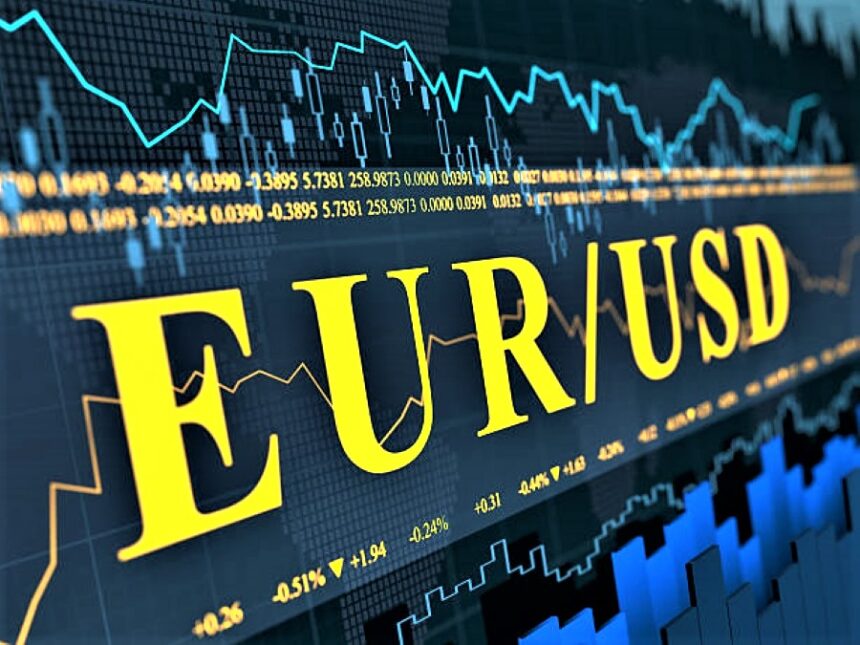The rare-earth accord matters for EURUSD because it chips away at one of the main sources of “safe-haven” demand for the greenback: fear of a wider trade war. With the headline risk cooling, investors are willing to rotate into higher-beta currencies and the euro is catching the bid.
Progress on two of Washington’s knottiest trade fronts has restored a measure of calm to global markets. On Friday, Treasury Secretary Scott Bessent confirmed a pact with Beijing that removes licensing delays on U.S. rare-earth imports a supply chain win for U.S. manufacturers and a clear de-escalation signal after months of tit-for-tat tariffs.
Canada ditches its digital-services tax another USD headwind
Hours before the levy on big-tech revenues was to take effect, Ottawa repealed its Digital Services Tax, clearing the way for stalled U.S.–Canada negotiations to restart.
The move removes a $2.3 billion cross-border irritant, keeping the door open for a broader North-American trade package by late July. In FX terms, the development deepens the contrast between a friendlier external backdrop and the still-cloudy U.S. domestic fiscal picture, intensifying downward pressure on the dollar index.
Japan stays at the table, extending the talks into September
Tokyo’s chief negotiator Ryosei Akazawa has extended his stay in Washington, signaling that both sides are determined to hammer out an auto-tariff compromise even if they miss the informal 9 July deadline.
Markets interpret the extension as another signpost that the White House is prioritising negotiated outcomes over tariff brinkmanship—again dulling the USD’s safe-haven aura and allowing EURUSD to orbit the 1.17 handle.
German consumers blink, but the euro shrugs it off
Monday’s data showed German Retail Sales plunging 1.6 % m/m in May, a far cry from the +0.5 % consensus.
Ordinarily such a drop would ding the euro, but the currency’s reaction was muted. Traders argue that the softness is retail-specific (online and grocery volumes fell after Easter distortions) while the broader Eurozone services PMI is still expanding. More importantly, the trade narrative is overshadowing domestic data—at least for now.
A $3.3 trillion tax bill weighs on U.S. fiscal credibility
Across the Atlantic, the Senate began debating President Trump’s 940-page “Big, Beautiful” tax-and-spending package. The Congressional Budget Office warns it would add $3.3 trillion to the deficit over ten years.
That spectre of larger Treasury issuance is feeding a bearish-USD feedback loop: wider fiscal gaps could force lower real yields if the Fed is obliged to help absorb supply, or higher inflation risk premia if it does not.
Dollar Index digs into 2022 support
The DXY is already paying the price, plumbing the 97-handle—its weakest print since February 2022 and roughly 12 % down year-to-date.
From a technical standpoint, a weekly close below the 95.14 pivot would expose the 2018 lows near 94.65, further brightening the euro’s medium-term outlook.
Markets price a September cut with growing conviction
Fed-funds futures now embed a 70–75 % probability of a 25 bp easing at the 17 September FOMC, up from barely 40 % a fortnight ago.
With only two dissenting voices on the Board openly hawkish and Chair Powell reiterating a “data-responsive” stance the bar for action keeps falling. Every incremental basis-point of expected easing erodes USD carry and, by extension, bolsters EURUSD.
The data diary: NFP comes a day early
Because 4 July falls on a Friday, the pivotal June Non-farm Payrolls report lands on Thursday, 3 July at 12 : 30 UTC.
Consensus looks for roughly 95 k jobs (vs 139 k prior) and a 4.3 % unemployment rate. A downside surprise would hard-wire the September-cut narrative; a beat might offer only a fleeting USD bounce unless paired with hotter wage growth.
Price action and levels that matter EURUSD
Bullish structure intact: EURUSD has printed higher highs and higher lows since mid-June.
Immediate resistance: 1.1750—the August 2021 swing-high.
Breakout trigger: A daily close above 1.1750 would unlock 1.1875 (50 % retrace of the 2020–2022 slide).
Support: 1.1670 intraday floor, followed by the 1.1580–1.1600 demand zone (200-hour EMA + weekly open).
Momentum oscillators on the four-hour chart remain comfortably in positive territory, hinting that dips will likely attract buyers.
Risks to the bullish EURUSD thesis
1. ECB push-back: Several Governing Council members speak this week; any hint that the euro’s strength is tightening financial conditions too quickly could temper gains.
2. Geopolitical shock: Middle-East cease-fire headlines have been supportive; any reversal would revive USD haven bids.
3. U.S. data beats: A strong NFP or upside CPI surprise on 11 July could postpone Fed easing bets.
Bottom line
For now, macro-level trade détente plus U.S. fiscal angst are trumping patchy Eurozone data. Unless the Fed blunts cut expectations or fresh geopolitical stress lifts the greenback, EURUSD looks poised to probe above 1.1750 and perhaps challenge the psychological 1.18 mark into the July FOMC blackout period.
Conclusion
The EURUSD pair remains resilient near multi-year highs, supported by growing optimism surrounding global trade negotiations and mounting pressure on the US Dollar due to fiscal concerns and rising expectations of a Fed rate cut in September. Despite weaker German retail data, the Euro holds its ground as market sentiment improves and investors shift toward risk-sensitive assets. With the upcoming US Nonfarm Payrolls report and German CPI data on the radar, EURUSD is poised to maintain its upward trajectory if the fundamental narrative continues to support a weaker USD outlook. A sustained break above 1.1750 could pave the way toward the 1.18 zone in the sessions ahead.
[sc_fs_faq html=”true” headline=”h2″ img=”” question=”Why is EUR/USD trading near multi-year highs?” img_alt=”” css_class=””] Optimism over global trade talks and a weaker US Dollar are lifting the pair. [/sc_fs_faq]
[sc_fs_multi_faq headline-0=”h2″ question-0=”What trade developments are boosting the Euro?” answer-0=”A US-China rare earth deal, Canada dropping its digital tax, and extended talks with Japan.” image-0=”” headline-1=”h2″ question-1=”How is US fiscal policy impacting the USD?” answer-1=”A proposed $3.3 trillion tax bill raises debt concerns, weighing on the Dollar.” image-1=”” headline-2=”h2″ question-2=”What’s next for EUR/USD this week?” answer-2=”Key focus is on US NFP data Thursday and German CPI inflation today.” image-2=”” count=”3″ html=”true” css_class=””]









